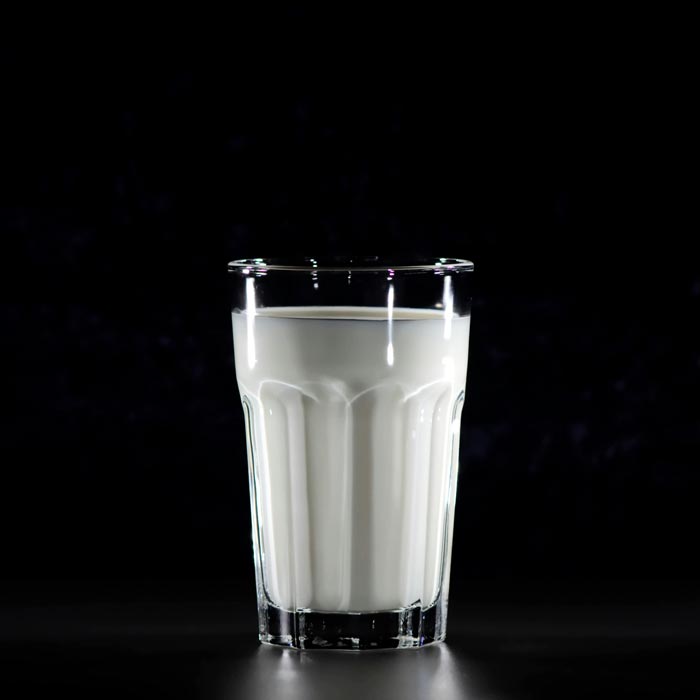Why You Shouldn’t Just Put Up with Lactose Intolerance
Many people suffer from lactose intolerance, but with the correct diet and regimen it can be controlled and even reversed.
Lactose (a disaccharide or sugar) is composed of glucose, galactose and other sugars. It can be found in the milk of mammals, such as cows and goats. The amount of lactose in liquid milk varies from 2% to 8 %, depending on its source. According to the US Department of Agriculture food database, a single cup of whole-fat milk can contain between 11.2g to 13g of lactose (up to 5,5%). Lower fat milks have slightly higher amounts. Comparatively, goat’s dairy contains less lactose. It ranges from 10g up to 11.5g (up to 4.7%) per cup. Camel’s Milk, which is not widely available, but is gaining popularity, has the lowest lactose content per cup, about 10g (4%)
What is lactose Intolerance?
Lactose Intolerance is a reduced ability to properly break down lactose in the digestive system due to a lack of the enzyme lactase. When you consume lactose and have insufficient lactase in your small intestines, the partially undigested lactose will travel to your colon where bacteria ferment it. After 30 minutes or two hours, symptoms such as cramping, bloating and diarrhea may occur. The severity of symptoms and the lactose threshold vary greatly from person to person.
There are three types of lactose tolerance: primary , congenital and secondary . Lactase deficiencies are rare. They can be present at birth, but they usually develop over time. This may happen during the aging processes (primary), after an illness or infection. It is possible that lactose intolerant or lactase-deficient individuals will be a temporary condition as their bodies heal, but they may also persist for a long time.
A milk allergy is not the same as lactose intolerance. A lactose allergy is an immune reaction to one or several ingested proteins or antigens. A milk allergy can cause anaphylaxis or even death. While lactose intolerance can be uncomfortable, it does not pose the same immediate health risks.
How common is lactose intolerant?
More than five billion people, or 65%, of the world’s population suffer from lactose intolerance. Lactose intolerance is more common among those of East Asian descent, African, Jewish and Greek origin, Arab or Italian descent.
[ruby_related heading=”More Read” total=3 layout=1 offset=5]
What makes people more vulnerable?
Lactose intolerance can be caused by a number of factors, including ethnicity, age, family history, injury or disease to the small intestine, cancer treatment, and long-term avoidance of dairy products.
Diagnosis
Most commonly, lactose intolerance can be diagnosed by your doctor using one of two methods: either a lactose toleration test or a hydrogen breath testing.
The test measures your blood glucose two hours after consuming a certain amount of lactose. Insufficient glucose rise indicates that you are not digesting lactose well and thus, do not absorb it.
The hydrogen breath test measures the amount of gases in your breath for a period of 2 to 3 hours. You may be unable to digest and absorb lactose if you have too much hydrogen in your breath.
Treatments
Treatments for lactose sensitivity include diet changes, supplements, and/or treating any underlying conditions.
Reduce your weight with these foods
Lactose intolerance is a condition that must be controlled to preserve intestinal health and prevent chronic inflammation or Leaky Gut Syndrome. You may need to reduce or avoid foods that contain high levels of milk sugar, depending on the severity of your symptoms.
Lactose-rich foods include:
- Liquid milk from cows and sheep.
- Non-fat Dry Milk Powder
- Evaporated and Condensed Milk
- Soft cheeses such as ricotta and cream cheeses.
- Ice cream.
- Heavy cream.
- Sour cream
You may tolerate these foods
Some foods contain less lactose or bacteria that pre-digest lactose. Some of the foods that are easily tolerated include:
- Hard cheeses such as Parmesan, Cheddar, and Swiss.
- Feta cheese.
- Yogurt.
- Butter.
- Camel’s Milk (due its low lactose content, camel milk is a milk alternative that may offer fewer digestive symptoms, and may be a safer alternative for people with milk allergies).
Supplements
Before meals, you can improve your lactose tolerance by taking lactase supplements. These supplements are available in powder, tablet, capsule or liquid form. There are many lactose-free options available.
Lactose Intolerance: Is it something else?
You may need to be evaluated by a doctor if you have been diagnosed with lactose intolerant and reduced your intake of lactose, but still feel no relief. This is because you could be suffering from another digestive condition. If you have a combination of lactase insufficiency, lactose allergy, and small intestinal bacterial growth (SIBO), then it may be necessary to seek medical attention.
There are other ways to deal with intolerance
Other strategies can help you reverse or manage your lactose insensitivity. These include taking lactase and reducing your milk intake.
- Consider taking a probiotic containing the healthy lactase-producing gut bacteria “>
- Small portions of foods containing lactose can be consumed throughout the day rather than large quantities at one time.
- Increase your milk intake over a period of several weeks or even months to try to increase your lactase tolerance and production.
- Exercise regularly, eat vegetables and foods rich in Omega-3, prioritize quality sleep, and manage any conditions or diseases you may be suffering from.







